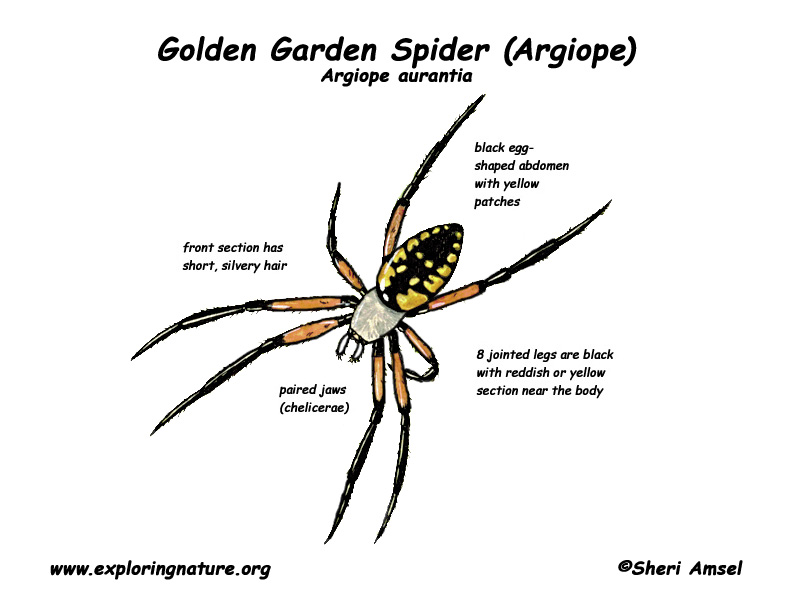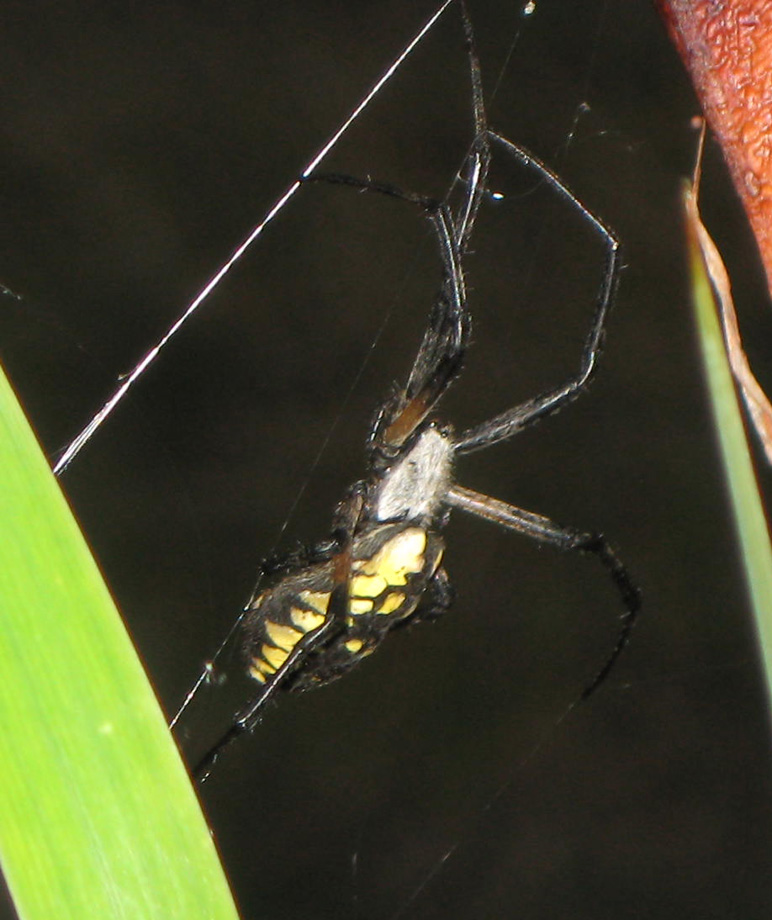

They are found throughout the U.S. and southern Canada and south to Central America.
They live in bushes and grassy meadows.
They have a black, egg-shaped abdomen with yellow patches. They are about an inch long (males are smaller). Their front section has short, silvery hair. Their 8 jointed legs are black with reddish or yellow sections near the body.
They build orb-shaped webs with white zig zag bands, where the female sits head down waiting for prey. She rests with her legs held in pairs. If bothered, she drops to the ground and hides.
They eat small flying insects that get stuck in their web.
Females lay eggs in the fall in a brown, papery, egg sac that protects them through the winter. Then she dies and babies hatch out in the spring.
Kingdom: Animalia
Phylum: Arthropoda
Class: Arachnida
Order: Araneae
Family: Araneidae
Genus: Argiope
Species: A. aurantia
When you research information you must cite the reference. Citing for websites is different from citing from books, magazines and periodicals. The style of citing shown here is from the MLA Style Citations (Modern Language Association).
When citing a WEBSITE the general format is as follows.
Author Last Name, First Name(s). "Title: Subtitle of Part of Web Page, if appropriate." Title: Subtitle: Section of Page if appropriate. Sponsoring/Publishing Agency, If Given. Additional significant descriptive information. Date of Electronic Publication or other Date, such as Last Updated. Day Month Year of access < URL >.
Amsel, Sheri. "Spider (Golden Garden) or Argiope" Exploring Nature Educational Resource ©2005-2024. April 3, 2024
< http://www.exploringnature.org/db/view/575 >


